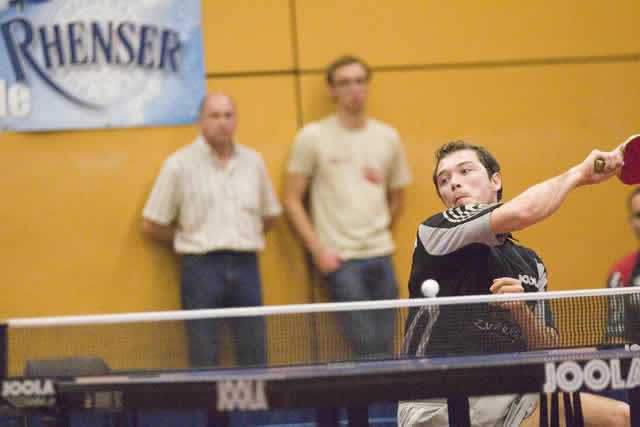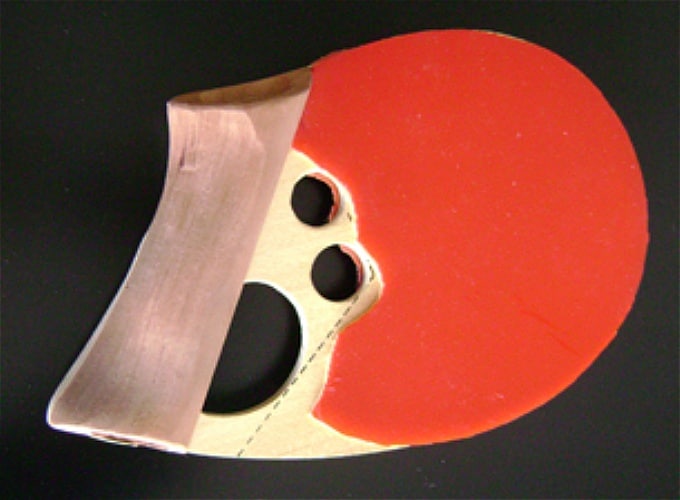Table tennis is a popular game with two or four opposing players. It started many centuries ago with the upper-class society but has evolved into a game widely played by people from all walks of life worldwide. Something knows it as the most played paddle game in the world today.

Table of Contents
ToggleWhat is the Grip in Table Tennis?
The game takes place on a table with a net as a division, and the role of each player is to hit the ping pong ball using a paddle. It requires power, speed, and basic knowledge of the game’s styles and techniques. And one primary table tennis skill you should learn is to know how to grip ping pong paddles the proper way.
In the beginning, many will find it challenging to perform the right table tennis bat grip, but with regular practice and perseverance, you will master the skill in no time. And to help you achieve your goal, here are fail-safe grip techniques when playing table tennis.
How To Grip The Paddle Correctly
Performing the proper grip is essential when playing table tennis, especially for beginners, because it controls the paddle’s angle, therefore managing the direction, speed, depth, and spin of the ball. It would help if you had a neutral grip position to change from forehand to backhand or vice versa with fast speed.
Different Table Tennis Grip
Shakehand grip. This kind of grip is used by most professional and recreational players. There are two variations of this grip – the shallow grip and the deep grip. The basic position is to hold the paddle-like when you are shaking somebody’s hand. With the combination of correct handle grip style and stance, it is relatively easy for shakehand grip players to perform powerful forehand and backhand stroke.
*Deep shakehand grip – Your thumb should rest on the
- Penhold grip
Several variations are currently adapted for this ping pong grip type. The essential ping pong paddle penhold grip hand position is to hold the paddle as if you’re holding a pen, where the name was derived. It is most common for Asian players to play ping pong with the penhold grip.
For penhold players, it is rather hard for them to do a backhand serve as the handgrip style is not in the comfort position. But penhold is very powerful in performing the forehand spin.
- Seemiller Grip
It is named after the renown American table tennis coach, Danny Seemiller. The paddle needs to hold similar to the grip of shakehand, but the thumb and index finger need to place on either side of the paddle. At the same time, the rest of the fingers need to place at the bottom part.
Pros and Cons About This Grip
The advantage of using Seemiller grip is it can give the player a powerful forehand topspin where good wrist movement on the forehand stroke is relatively easy to carry out. This grip is also good to use for blocking on both sides.
While the disadvantage of holding a paddle-like this is that it hampers The amount of wrist movement on the backhand side, making the player unable to perform topspin very well.
Like in any other sports, perfecting the essential skills is crucial and will affect your game’s performance. As with table tennis, mastering ping paddles’ grip techniques will help you do exceptionally well in your sport. So, learn all the skills above and puff up with pride as you play a table tennis game.
- Hammer Grip
The thumb and index finger curled around the handle instead of flat across the bottom of the face like in the standard handshake grip. Players with this type of grip won’t develop rapid-fire, over-the-table, block and drive skills on both wings.
5. Pistol Grip

The grip itself is a large part of the blade. You can look at the design of the blade. You can hold it like holding a pistol. There can be a section of wood exposed because of the blade shape itself. But it is not approved by ITTF so you can’t use such a grip to play table tennis in a formal tournament.
You can learn proper grip of ping pong paddle by following this video from PingSkills.
How to Hold A Table Tennis Bat

This quick video shows you how to hold a table tennis bat properly. When I first started playing table tennis, I found that my hand was getting a little tired after playing for an hour or so. I realized that it was because of my grip. I was using the Shakehand grip but my pointing finger wasn’t positioned properly.
It was facing up rather than down. This increased the pressure on my hand and it tired a lot quicker. Also, when you hold your bat, try to relax your hand.
This entirely depends on the actual individual and skills. As a newbie, the shakehand grip felt a lot more natural than the penhold grip. I found that I couldn’t use my backhand properly and it just didn’t feel natural. As I said, it all depends on the player and what you feel comfortable with. You really need to practice yourself and see what feels more natural to you and take it on from there.
Why fuss so much about the grip?
When you start learning more advance stroke such as forward push or loops, your grip will play in an important part of getting the technique right. If your grip is wrong, you will be hitting the net more than getting points. So go out there and sort out your grip.

Warren Davies
Hi, I’m Warren Davies, a table tennis addict who loves sharing tips, reviews, and everything you need to level up your game. I’ve spent years playing, testing gear, and geeking out over the sport, and I’m here to make things simple and fun for players of all levels. When I’m not writing, you’ll probably find me perfecting my forehand or trying out the latest paddle.








